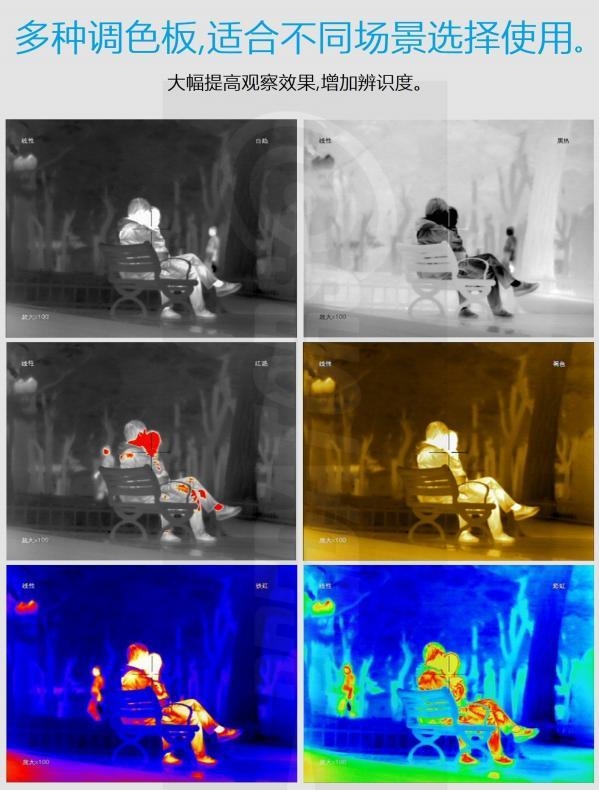The imaging principle of thermal imaging night vision products
Thermal imaging night vision can produce realistic and clear thermal images in full darkness, mist and smoke. Seamless connection with widescreen navigation system Multi-function navigation system. The camera lens can freely rotate 360 degrees horizontally and pitch up and down ±90 degrees, allowing you to experience the sensory enjoyment and security brought by military technology.
Designed to enhance the driver's visual ability. The system can output clear thermal images of the road conditions ahead in the dark night, bad weather such as haze and low human visibility such as headlight glare, effectively improving the driver's visual range.
At the same time, only pedestrian recognition and the collision alarm function of the front car can detect pedestrians, vehicles and obstacles in advance, which greatly improves the safety of driving.

Principle of thermal imaging night vision:
Thermal imaging is a passive infrared, is to receive the object temperature (heat) emitted by the infrared, received through the processing of images, for display, the general image regardless of day and night are gray images.
Thermal imaging is not active infrared, thermal imaging night vision itself does not emit infrared, but only receives a boundary of infrared, so it is very simple to conclude that as long as thermal imaging can receive the infrared emitted by the object, there is an image output, on the contrary, if you can not receive infrared, you can not reflect the image of the object we want to see.

So now we all asked some questions, such as: can thermal imaging see through the wall, look at the people and things in the car, through the glass and so on, there are certain results.
Through the wall and glass, the wall blocks the infrared ray, and the thermal imaging night vision device can not fundamentally receive the infrared ray, and can not detect the object on the other side of the wall and glass. That is to say, if there is an image, there must not be all sealed objects to block the infrared, otherwise it must not receive infrared imaging. Like some trees, grass and other environments, because they do not all block the infrared, thermal imaging can still find that there is a higher temperature than the plant behind the object. Such as grass and trees behind people and animals, it is obvious that there is a temperature difference value, hot things will shine, cold objects will be dark.

Thermal imaging is actually temperature difference imaging. Hotter objects give off more infrared, and cooler objects give off less infrared. People walk to the back of the glass, can not see the image of people, that is because the glass blocks the infrared of people outside, thermal imaging night vision can not receive infrared, can not show the image of people.
Two people standing in the image, there are people in the image, there are people above the glass, that is because the human infrared is received by the human thermal imaging, and there are people on the glass because the human infrared is emitted to all sides, and the infrared emitted to the glass is reflected back by the glass, and is received by the thermal imaging night vision device, so we can see the image of someone on the glass.
When people wear clothes, most of the infrared is blocked by clothes, and the body part is relatively black because the temperature of the clothes is much lower than the temperature of the human head, the head with high temperature is brighter, and the clothes with low temperature are darker.
At this time, someone put 2 palms on the clothes for 2 seconds, we found that people have 2 palms printed on the clothes, that is, the temperature of the palm passed to the clothes, the temperature of the palm, slowly removed after 2 or 3 seconds, the palm print disappeared, that is the temperature of the palm of the clothes slowly spread out and disappeared.


